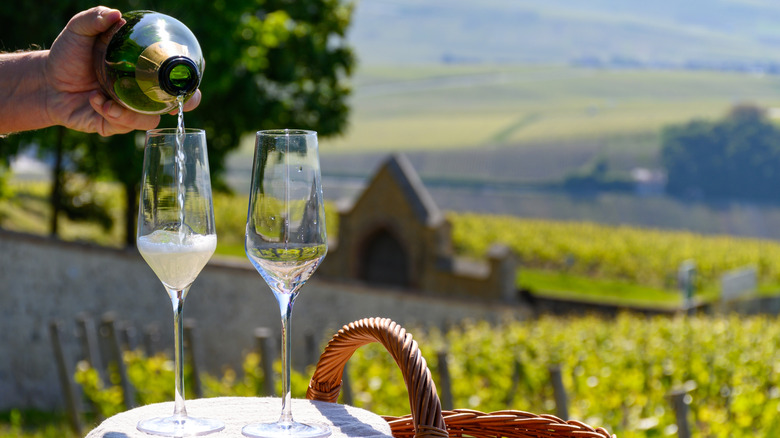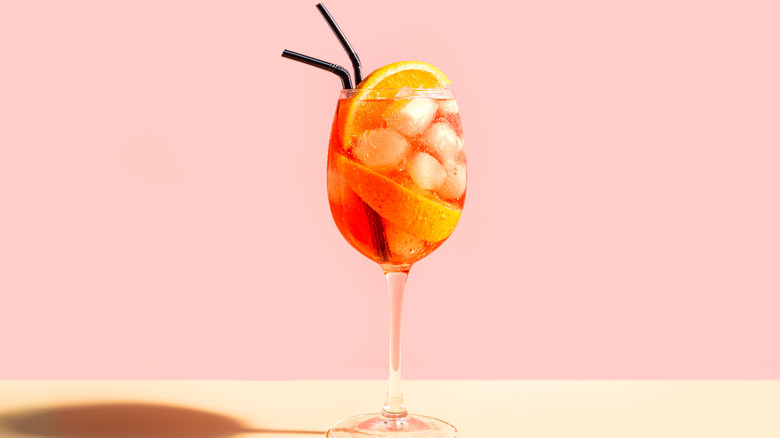Why Champagne Is Ruining Your Spritz (And What To Use Instead)
Ah, the spritz. One of the most seriously underrated summer cocktails to sip by the pool, it's traditionally made with sparkling or dry white wine, bitters (commonly Aperol), and soda water. If you're adding Champagne, though, you're doing it all wrong. We spoke exclusively with Sabato Sagaria, beverage director of Marc Forgione's Respect Hospitality Group (which includes New York hot spots Forgione, Trattoria One Fifth, and Peasant), who explained why Champagne is ruining your spritz — and told us what to use instead.
"I personally avoid Champagne in a spritz," Sagaria told Chowhound. "The extended lees contact required for Champagne tends to overpower the purity and freshness I enjoy in a spritz. For me, a sparkling wine like Prosecco is my go-to, as it plays nicely with a wider array of flavors."
Sagaria is referring to a maturation technique required for Champagne to legally be sold as Champagne. Lees are the dead yeast cells left behind in the wine after the process of fermentation. Non-vintage Champagne, which is aged in the bottle for at least 15 months, is required by law to spend at least one year "on lees" or with the lees still in the wine, while vintage Champagne must be on lees for a minimum of three years.
The rise of the Aperol spritz
Now thought of as a popular Italian aperitif, the spritz actually has Austrian origins. It all started in the early 1800s, when the Austrian soldiers who were stationed in northern Italy got creative. Missing the beer they were used to drinking at home, they added water — and later carbonated water — to Italian wine to water down the alcohol content. The name spritz is a shortened version of the German "spritzen," which means "to splash" or "to spray."
Over the decades, the spritz evolved from its humble beginnings of wine and water to include other ingredients, like liqueurs. Perhaps best known is the Aperol spritz, which features the Italians bitters first created in 1919. With its bright orange color and a citrusy, herbal, and bitter flavor, Aperol combines with a mixture of Prosecco and soda water for a light, crisp, and refreshing cocktail.
To really get the Aperol spritz just right, though, you have to strategize the order in which you pour each individual ingredient. The correct way to pour an Aperol spritz to get the best possible sip is to start with the sparkling wine and seltzer and finish off with the denser and weightier Aperol.

